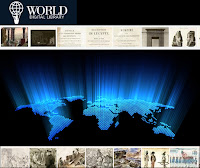Media according to its literal definition:
me•di•a (pronounced mee-dee-uh) noun
1. a plural of medium
me•di•a (pronounced mee-dee-uh) noun
1. a plural of medium
>> medium:
1. a middle state or condition; mean.
2. something intermediate in nature or degree.
3. the element that is the natural habitat of an organism.
4. surrounding objects, conditions, or influences; environment.
2. (usually used with a plural verb) the means of communication, as radio and television, newspapers, and magazines, that reach or influence people widely.
2. something intermediate in nature or degree.
3. the element that is the natural habitat of an organism.
4. surrounding objects, conditions, or influences; environment.
2. (usually used with a plural verb) the means of communication, as radio and television, newspapers, and magazines, that reach or influence people widely.
3. Anatomy: the middle layer of an artery or lymphatic
vessel.
4. Entomology: a longitudinal vein in the middle portion
of the wing of an insect.
Thus in short, media can be taken as the plural
version of something that is in the middle as well as being surrounding
objects/influences/environment. Thus, being in the middle would refer to
the fact that media is used as a tool to communicate between 2 sides.
Currently there are many, many types of media as it
exists in a wide range of forms. The most basic classification of media forms
(i.e. their state of existence) would be:
• physical media: this form of media involves other
senses besides that of sight and sound, e.g. sense of touch heightens the
experience of sculpture/carpentry
• electronic/digital media: this form of media is
limited to the sense of sight and sound
(continued via link below)
(continued via link below)
Physical
Media
Advertising
This media normally involves printing of some sort (however, they can be hand-made if not meant to be mass-duplicated), and comes in many sizes ranging from smaller than B5 paper and larger than a car. Colour usage, arrangement, images, and text, play important roles in deciding whether an advertising works or not in catching people's attention.
flyers
(source)
posters
(source)
billboards
(source)
buntings
(source)
Publishing
Publishing also involves printing at one point or another. The difference between published media and advertising media is that publishing normally compiles more than just 1 page or a few pages of content.
literature
(source)
guidebooks
(source)
newspapers
(source)
magazines
(source)
Artistic
Artistic media are normally hand-produced but can also be machine-produced (architecture). What is important for a media form to be considered as artistic is the sense of uniqueness and individuality, in that it cannot be so easily mass-produced for everyone to have their own copy. Artistic media is best enjoyed when personally being in the same space as the media.
paintings
(source)
sculptures
(source)
architecture
(source)
carpentry
(source)
photography
(source)
performance
(source)
Electronic/Digital
Media
Broadcast
Broadcast media consist of digital contents that are "published" via digital mediums such as the television. These media forms' contents are something that you cannot physically touch or hold, but are experienced via sense of sight and hearing.
television
(source)
radio
(source)
film
(source)
commercials
(source)
telephones
(source)
Internet/Online/Web-based
Media on the Internet is similar to broadcast media in the sense that whatever you see/hear/read exists in digital form, intangible, and behind a screen. The advantage of Internet media is the free will of users to choose what they want and when they want it, instead of being limited to a schedule like a TV's show schedule.
websites
(source)
video
(source)
audio
(source)
images
(source)
social
(source)
Publishing
Digital publishing is similar to physical publishing, but like broadcasted media and Internet media, the contents of digital publishing exist behind a screen and are intangible. In the cases of CD and DVD, despite being published in tangible/physical forms, they require a digital player and television/computer screen to be consumed.
e-books
(source)
digital libraries
(source)
catalogues
(source)
CDs
(source)
DVDs
(source)
References:
Definition of media:
Media forms:
• Media





























No comments:
Post a Comment